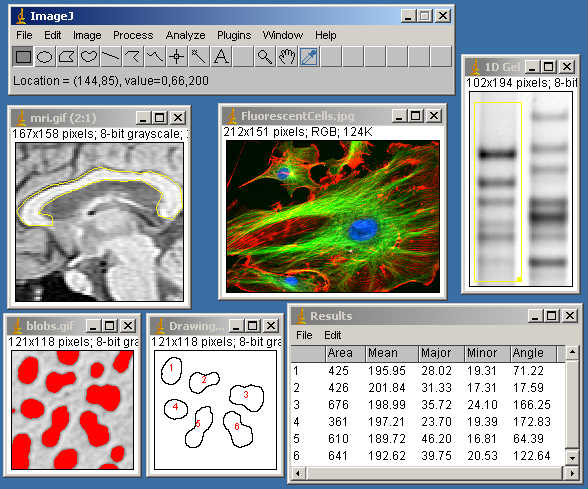
Morphological reconstruction, allowing fast detection of regional or extended extrema, removing of borders, or hole filling

Morphological filtering: erosion & dilation, closing & opening, morphological gradient & laplacian, top-hat. The library implements several functionalities that were missing in the ImageJ software, and that were not or only partially covered by other plugins. tar.gz MorphoLibJĬollection of mathematical morphology methods and plugins for ImageJ, created at INRA-IJPB Modeling and Digital Imaging lab. The Fiji distribution of ImageJ bundles both ImageJ 1.x and ImageJ2, including ImageJ2’s backwards compatibility layer to transparently convert between ImageJ 1.x and ImageJ2 data structures as needed.MorphoLibJ by ijpb MorphoLibJ Collection of mathematical morphology methods and plugins for ImageJ View on GitHub Download. The other main flavor of ImageJ, a redesign started in 2010, is known as ImageJ2, to differentiate it from the original ImageJ. You may also sometimes see it called “plain ImageJ” or “ImageJ1” or “IJ1” by the community, but these are only shorthands. This wiki refers to the original version of ImageJ as the original ImageJ or ImageJ 1.x in places where it is important to distinguish it from other flavors of ImageJ. Now there are many hundreds, probably thousands, of plugins written by members of a diverse community. ImageJ grew organically over time as Wayne Rasband continued to add features according to user requests. It was initially developed in 1997 as a cross-platform version of NIH Image. It has always been, and continues to be, a project of Wayne Rasband, with the help of many contributors. The original ImageJ has been under continuous development since 1997.


ImageJ is public domain software for processing and analyzing scientific images, with many derivatives and variants, including ImageJ2, Fiji, and others.


 0 kommentar(er)
0 kommentar(er)
